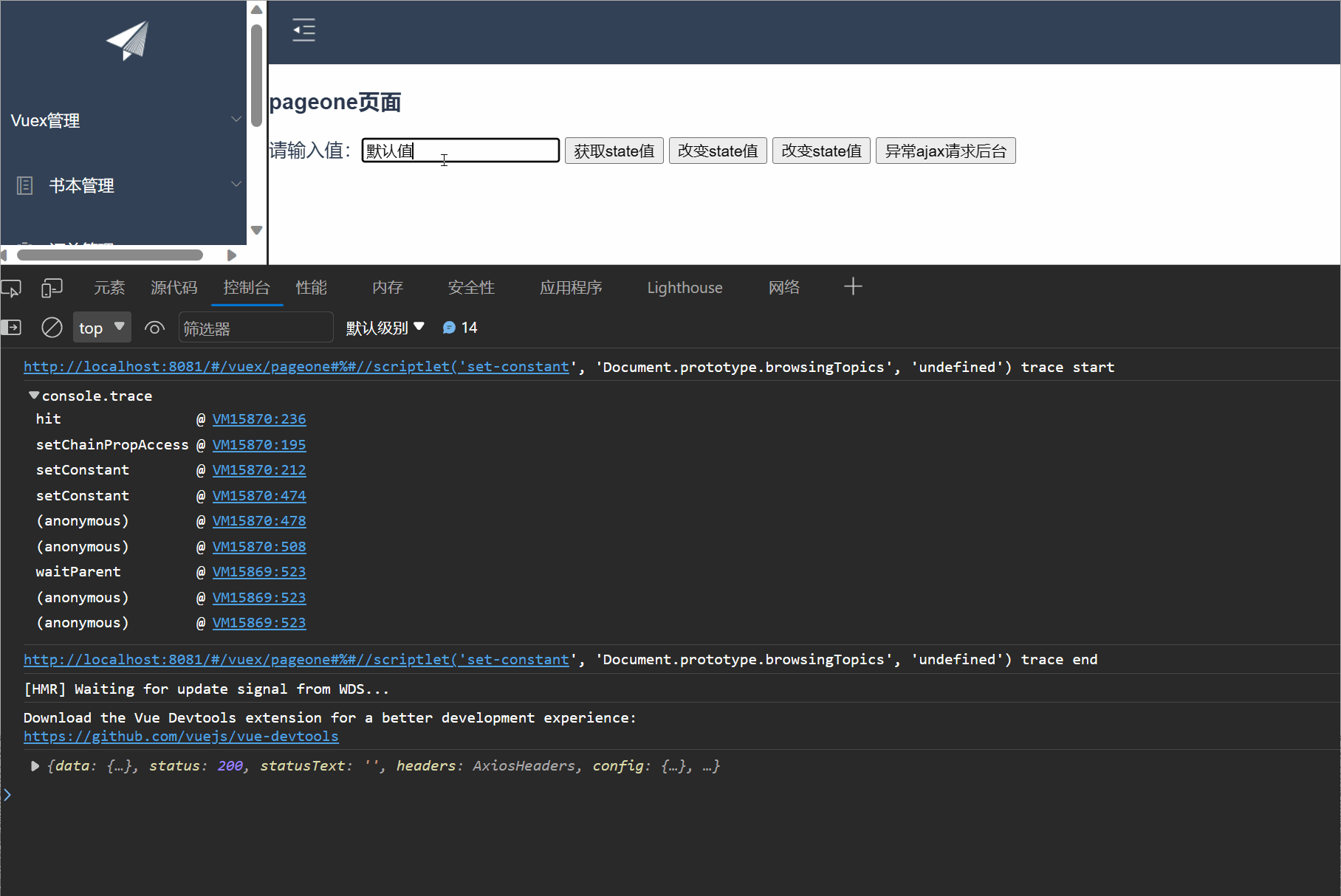为什么要使用多态
项目需求:
因为各种不确定原因,包括人为原因,ODU设备会自动的切换到其它类型的设备,而切换后的设备,和原设备有很多不同的地方。如何完美的实现这个切换呢?
解决方案:
使用多态。
聚会案例:
Demo.cpp
#include <iostream>
using namespace std;
class Father {
public:
void play() {
cout << "到KTV唱歌..." << endl;
}
};
class Son :public Father {
public:
void play() {
cout << "一起打王者吧!" << endl;
}
};
void party(Father **men, int n) {
for (int i = 0; i<n; i++) {
men[i]->play();
}
}
int main(void) {
Father father;
Son son1, son2;
Father* men[] = { &father, &son1, &son2 };
party(men, sizeof(men) / sizeof(men[0]));
system("pause");
return 0;
}
解决方案:
通过虚函数,实现多态。
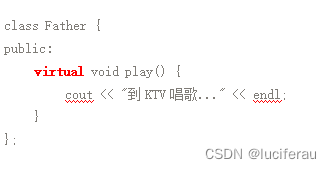
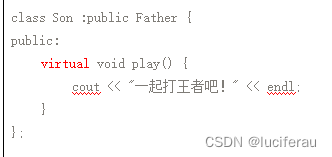
项目多态-虚函数
多态的本质:
形式上,使用统一的父类指针做一般性处理,
但是实际执行时,这个指针可能指向子类对象,
形式上,原本调用父类的方法,但是实际上会调用子类的同名方法。
【注意】
程序执行时,父类指针指向父类对象,或子类对象时,在形式上是无法分辨的!
只有通过多态机制,才能执行真正对应的方法。
基础-虚函数的使用
虚函数的定义:
在函数的返回类型之前使用virtual
只在成员函数的声明中添加virtual, 在成员函数的实现中不要加virtual
虚函数的继承:
l 如果某个成员函数被声明为虚函数,那么它的子类【派生类】,以及子类的子类中,所继承的这个成员函数,也自动是虚函数。
l *如果在子类中重写这个虚函数,可以不用再写virtual, 但是仍建议写virtual, 更可读!*
虚函数表
单个类的虚函数表
#include <iostream>
using namespace std;
class Father {
public:
virtual void func1() { cout << "Father::func1" << endl; }
virtual void func2() { cout << "Father::func2" << endl; }
virtual void func3() { cout << "Father::func3" << endl; }
void func4() { cout << "非虚函数:Father::func4" << endl; }
public: //为了便于测试,特别该用public
int x = 100;
int y = 200;
static int z;
};
typedef void (*func_t)(void);
int Father::z = 1;
int main(void) {
Father father;
// 含有虚函数的对象的内存中,最先存储的就是“虚函数表”
cout << "对象地址:" << (int*)&father << endl;
int* vptr = (int*)*(int*)&father;
cout << "虚函数表指针vptr:" << vptr << endl;
cout << "调用第1个虚函数: ";
((func_t) * (vptr + 0))();
cout << "调用第2个虚函数:";
((func_t) * (vptr + 1))();
cout << "调用第3个虚函数: ";
((func_t) * (vptr + 2))();
cout << "第1个数据成员的地址: " << endl;
cout << &father.x << endl;
cout << std::hex << (int)&father + 4 << endl;
cout << "第1个数据成员的值:" << endl;
cout << std::dec << father.x << endl;
cout << *(int*)((int)&father + 4) << endl;
cout << "第2个数据成员的地址: " << endl;
cout << &father.y << endl;
cout << std::hex << (int)&father + 8 << endl;
cout << "第2个数据成员的值:" << endl;
cout << std::dec << father.y << endl;
cout << *(int*)((int)&father + 8) << endl;
cout << "sizeof(father)==" << sizeof(father) << endl;
Father father2;
cout << "father的虚函数表:";
cout << *(int*)(*(int*)&father) << endl;
cout << "father2的虚函数表:";
cout << *(int*)(*(int*)&father2) << endl;
system("pause");
return 0;
}
执行效果
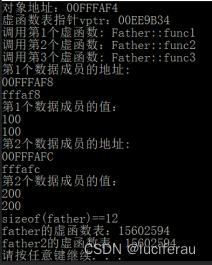
VS的对象内存分布分析:
项目的命令行配置中添加: /d1 reportSingleClassLayoutFather
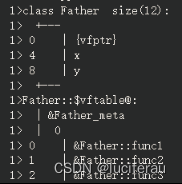
手绘内存分布: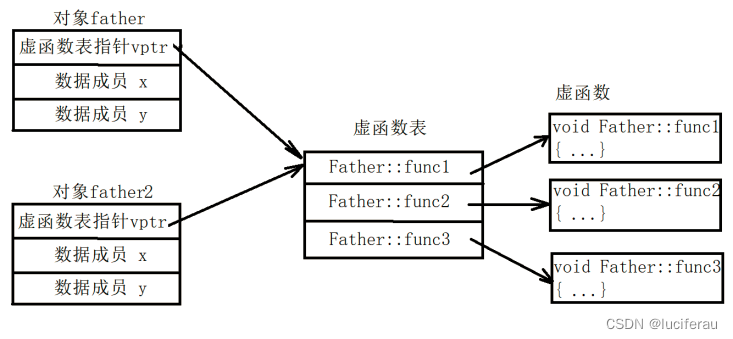
对象内,首先存储的是“虚函数表指针”,又称“虚表指针”。
然后再存储非静态数据成员。
对象的非虚函数,保存在类的代码中!
对象的内存,只存储虚函数表和数据成员
(类的静态数据成员,保存在数据区中,和对象是分开存储的)
添加虚函数后,对象的内存空间不变!仅虚函数表中添加条目
多个对象,共享同一个虚函数表!
使用继承的虚函数表
#include <iostream>
using namespace std;
class Father {
public:
virtual void func1() { cout << "Father::func1" << endl; }
virtual void func2() { cout << "Father::func2" << endl; }
virtual void func3() { cout << "Father::func3" << endl; }
void func4() { cout << "非虚函数:Father::func4" << endl; }
public: //为了便于测试,特别该用public
int x = 100;
int y = 200;
};
class Son : public Father {
public:
void func1() { cout << "Son::func1" << endl; }
virtual void func5() { cout << "Son::func5" << endl; }
};
typedef void (*func_t)(void);
int main(void) {
Father father;
Son son;
// 含有虚函数的对象的内存中,最先存储的就是“虚函数表”
cout << "son对象地址:" << (int*)&son << endl;
int* vptr = (int*)*(int*)&son;
cout << "虚函数表指针vptr:" << vptr << endl;
for (int i = 0; i < 4; i++) {
cout << "调用第" << i + 1 << "个虚函数:";
((func_t) * (vptr + i))();
}
for (int i = 0; i < 2; i++) {
// +4 是因为先存储了虚表指针
cout << *(int*)((int)&son + 4 + i * 4) << endl;
}
system("pause");
return 0;
}
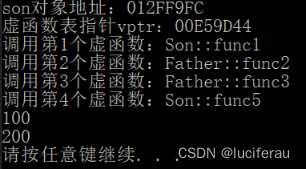
内存分布
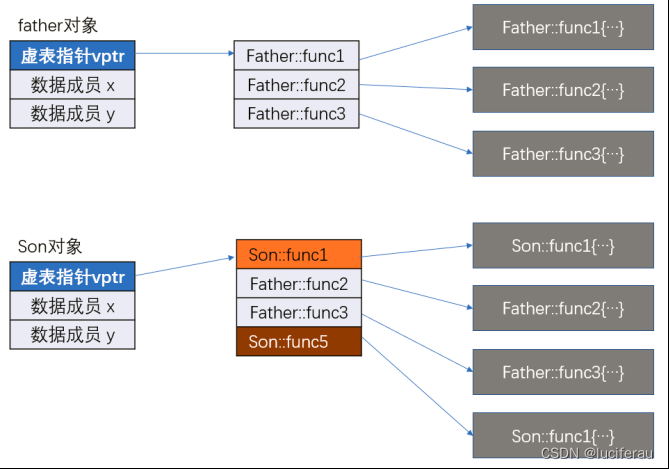
补充:
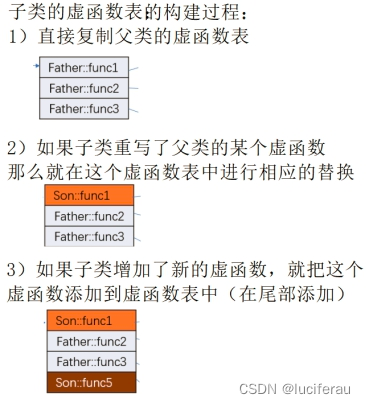
多重继承的虚函数表
#include <iostream>
using namespace std;
class Father {
public:
virtual void func1() { cout << "Father::func1" << endl; }
virtual void func2() { cout << "Father::func2" << endl; }
virtual void func3() { cout << "Father::func3" << endl; }
void func4() { cout << "非虚函数:Father::func4" << endl; }
public:
int x = 200;
int y = 300;
static int z;
};
class Mother {
public:
virtual void handle1() { cout << "Mother::handle1" << endl; }
virtual void handle2() { cout << "Mother::handle2" << endl; }
virtual void handle3() { cout << "Mother::handle3" << endl; }
public: //为了便于测试,使用public权限
int m = 400;
int n = 500;
};
class Son : public Father, public Mother {
public:
void func1() { cout << "Son::func1" << endl; }
virtual void handle1() { cout << "Son::handle1" << endl; }
virtual void func5() { cout << "Son::func5" << endl; }
};
int Father::z = 0;
typedef void(*func_t)(void);
int main(void) {
Son son;
int* vptr = (int*) * (int*)&son;
cout << "第一个虚函数表指针:" << vptr << endl;
for (int i = 0; i < 4; i++) {
cout << "调用第" << i + 1 << "个虚函数:";
((func_t) * (vptr + i))();
}
for (int i = 0; i < 2; i++) {
cout << *(int*)((int)&son + 4 + i * 4) << endl;
}
int* vptr2 = (int*) * ((int*)&son + 3);
for (int i = 0; i < 3; i++) {
cout << "调用第" << i + 1 << "个虚函数:";
((func_t) * (vptr2 + i))();
}
for (int i = 0; i < 2; i++) {
cout << *(int*)((int)&son + 16 + i * 4) << endl;
}
system("pause");
return 0;
}
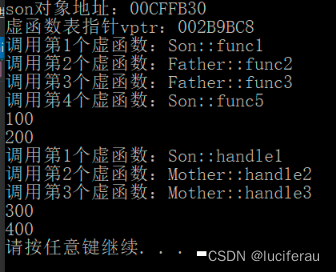
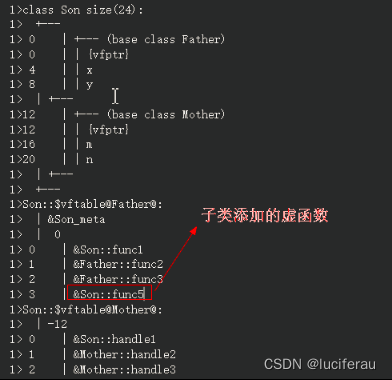
内存分布
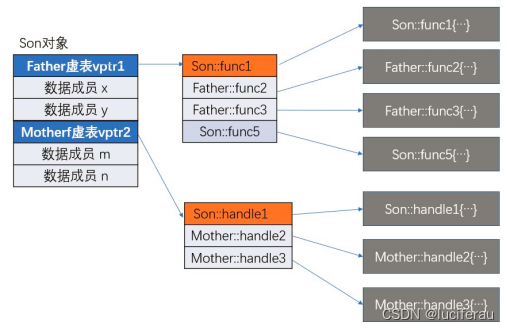
子类的虚函数表
- 直接复制父类的虚函数表
- 如果子类重写了父类的某个虚函数,那么就在这个虚函数表中进行相应替换
- 如果子类添加了新的虚函数,那么就把这个虚函数添加到虚函数表中(末尾添加)
final
用来修饰类,让该类不能被继承
理解:使得该类终结!
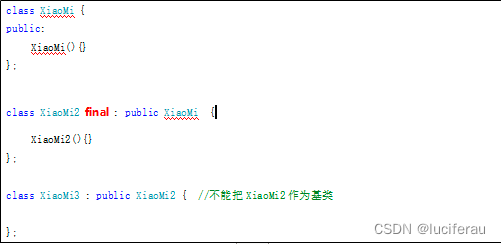
用来修饰类的虚函数,使得该虚函数在子类中,不能被重写
理解:使得该功能终结
class XiaoMi {
public:
virtual void func() final;
};
void XiaoMi::func() { //不需要再写final
cout << "XiaoMi::func" << endl;
}
class XiaoMi2 : public XiaoMi {
public:
void func() {}; // 错误!不能重写func函数
};
override
override仅能用于修饰虚函数。
作用:
-
提示程序的阅读者,这个函数是重写父类的功能。
2 .防止程序员在重写父类的函数时,把函数名写错
#include <iostream>
using namespace std;
class XiaoMi {
public:
virtual void func() { cout << "XiaoMi::func" << endl; };
};
class XiaoMi2 : public XiaoMi {
public:
void func() override {}
//void func() override; 告诉程序员func是重写父类的虚函数
//void func1() override{} 错误!因为父类没有func1这个虚函数
};
int main(void) {
XiaoMi2 xiaomi;
return 0;
}
override只需在函数声明中使用,不需要在函数的实现中使用。
遗失的子类析构函数
#include <iostream>
#include <Windows.h>
using namespace std;
class Father {
public:
Father(const char* addr = "中国") {
cout << __FUNCTION__ << endl;
int len = strlen(addr) + 1;
this->addr = new char[len];
strcpy_s(this->addr, len, addr);
}
~Father() {
cout << __FUNCTION__ << endl;
if (addr) {
delete addr;
addr = NULL;
}
}
private:
char* addr;
};
class Son :public Father{
public:
Son(const char *game = "吃鸡",const char *addr = "中国"):Father(addr) {
cout << "执行了Son的构造函数" << endl;
int len = strlen(game) + 1;
this->game = new char[len];
strcpy_s(this->game, len, game);
}
~Son() {
cout << __FUNCTION__ << endl;
if (game) {
delete game;
game = NULL;
}
}
private:
char* game;
};
int main(void) {
cout << "--------case1---------" << endl;
Father* father = new Father();
delete father;
cout << "----case2----" << endl;
Son* son = new Son();
delete son;
cout << "----case3----" << endl;
father = new Son();
delete father;
return 0;
}
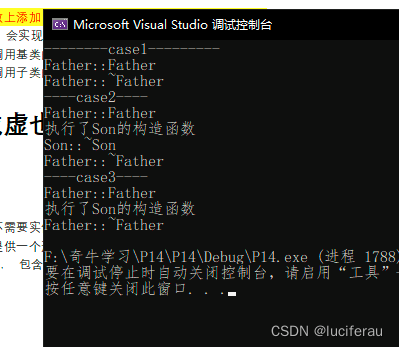
解决方案析构函数加上virtual关键字
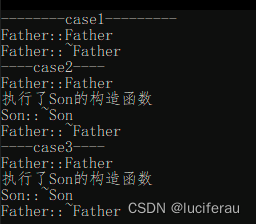
把Father类的析构函数定义为virtual函数时,如果对Father类的指针使用delete操作时,就会对该指针使用动态析构(如果这个指针指向的时子类对象,那么先调用子类对象的析构函数,再调用Father类的(自己类)析构函数)
为了防止内存泄露,最好是在基类析构函数上添加virtual关键字,使基类析构函数为虚函数
目的在于,当使用delete释放基类指针时,会实现动态的析构:
如果基类指针指向的是基类对象,那么只调用基类的析构函数
如果基类指针指向的是子类对象,那么先调用子类的析构函数,再调用父类的析构函数
纯虚也有用:纯虚函数与抽象类
什么时候使用纯虚函数
某些类,在现实角度和项目实现角度,都不需要实例化(不需要创建它的对象),
这个类中定义的某些成员函数,只是为了提供一个形式上的接口,准备让子类来做具体的实现。
此时,这个方法,就可以定义为“纯虚函数”, 包含纯虚函数的类,就称为抽象类。
#include <iostream>
#include <string>
#include <Windows.h>
using namespace std;
class Shape {
public:
Shape(const string& color = "white") {
this->color = color;
}
//把area定义为“纯虚函数”
virtual float area() = 0;
string getColor() { return color; }
private:
string color;
};
class Circle :public Shape {
public:
Circle(float radius = 0, const string& color = "white")
:Shape(color), r(radius) {}
float area() { return 3.14 * r * r; }
private:
float r;
};
纯虚函数的注意事项···
父类声明某纯虚函数后,那么它的子类。
1)要么实现这个纯虚函数 (最常见)
2)要么继续把这个纯虚函数声明为纯虚函数,这个子类也成为抽象类
3)要么不对这个纯虚函数做任何处理,等效于上一种情况(该方式不推荐)
项目实例

ODU.h
#pragma once
#include <iostream>
#define ODU_TYPE_331_FLAG 331
#define ODU_TYPE_335_FLAG 335
using namespace std;
//ODU类,用于处理老ODU331设备
enum class ODU_TYPE {
OUT_TYPE_331,
ODU_TYPE_335,
ODU_TYPE_UNKNOWN
};
class ODU
{
public :
ODU();
virtual int getTxFre();//获取发射频率
virtual bool setTxFre(int);//设置发射频率
virtual int getRxFre();//获取接受频率
virtual bool setRxFre(int);//设置接受频率
virtual float getTxPower();//获取发射功率
virtual bool setTxPower(float);//设置发射功率
virtual float getRxL();//获取接收电频
virtual bool heartBeat();//心跳包
virtual string getName();//获取该设备的名字
ODU_TYPE getODUType();//获取当前OUD类型
protected:
int txFre;
int rxFre;
float txPower;
float rxL;
ODU_TYPE type;
};
ODU.cpp
#include "ODU.h"
#include <iostream>
#include <string>
using namespace std;
ODU::ODU()
{
txFre = 34400;
rxFre = 31100;
txPower = 20;
rxL = 0;
type = ODU_TYPE::OUT_TYPE_331;
cout << "调用ODU()" << endl;
}
int ODU::getTxFre()
{
return txFre;
}
bool ODU::setTxFre(int frequence)
{
txFre = frequence;
cout << getName() << "发射频率已经设置为" << txFre << "Hz" << endl;
return true;
}
int ODU::getRxFre()
{
return rxFre;
}
bool ODU::setRxFre(int frequence)
{
rxFre = frequence;
cout << getName() << "接收频率已经设置为" << rxFre << "Hz" << endl;
return true;
}
float ODU::getTxPower()
{
return txPower;
}
bool ODU::setTxPower(float power)
{
txPower = power;
cout << getName() << "发射功率已经设置为" << txPower << "Hz" << endl;
return true;
}
float ODU::getRxL()
{
return rxL;
}
bool ODU::heartBeat()
{
cout <<getName()<< "模拟串口协议读取数据,获取心跳包的反馈...【"
<< ODU_TYPE_331_FLAG <<"】" << endl;
int response;
cin >> response;
if (response == ODU_TYPE_331_FLAG) {
return true;
}
return false;
}
string ODU::getName()
{
string ret;
switch (type)
{
case ODU_TYPE::OUT_TYPE_331:
ret = "ODU331";
break;
case ODU_TYPE::ODU_TYPE_335:
ret = "ODU335";
break;
case ODU_TYPE::ODU_TYPE_UNKNOWN:
default:
ret = "ODUUNKNOWN";
break;
}
return ret;
}
ODU_TYPE ODU::getODUType()
{
return type;
}
ODU335.h
#pragma once
#include "ODU.h"
class ODU335 :public ODU
{
public:
ODU335();
bool heartBeat()override;
//bool set()override;
};
ODU335.cpp
#include "ODU335.h"
ODU335::ODU335()
{
cout << "调用ODU335" << endl;
type = ODU_TYPE::ODU_TYPE_335;
}
bool ODU335::heartBeat()
{
cout << getName() << "模拟串口协议读取数据,获取心跳包的反馈...【"
<< ODU_TYPE_335_FLAG << "】" << endl;
int response;
cin >> response;
if (response == ODU_TYPE_335_FLAG) {
type = ODU_TYPE::ODU_TYPE_335;
return true;
}
}
main.cpp
#include <iostream>
#include <string>
#include <Windows.h>
#include <thread>
#include "ODU.h"
#include "ODU335.h"
using namespace std;
ODU* odu = NULL;
void test(ODU* odu) {
odu->setRxFre(35588);
cout << odu->getRxFre() << endl;
odu->heartBeat();
}
void oduMonitorHandler() {
while (true)
{
if (odu->heartBeat() == false) {
//切换ODU
ODU_TYPE type = odu->getODUType();
switch (type)
{
case ODU_TYPE::OUT_TYPE_331:
delete odu;
odu = new ODU335;
break;
case ODU_TYPE::ODU_TYPE_335:
delete odu;
odu = new ODU;
break;
case ODU_TYPE::ODU_TYPE_UNKNOWN:
default:
odu = NULL;
return;
break;
}
}
Sleep(3000);
}
return;
}
int main(void) {
odu = new ODU();
//创建一个线程 对于ODU进监测
std::thread oduMonitor(oduMonitorHandler);
//主线程等待odumonitor的线程结束
oduMonitor.join();
return 0;
}
常见错误总结
- 虚函数的函数原型
子类在重新实现继承的虚函数时,要和主要函数的原型一致 如果已经继承虚函数: bool heartBeat(); 那么重写虚函数时,函数原型必须保持完全一致: bool heartBeat(); 而且子类不能添加: int heartBeat(); //因为仅函数的返回类型不同时,不能区别两个函数。 但是可以添加: int heartBeat(int);
-
析构函数是否使用虚函数
有子类时,析构函数就应该使用虚函数
子类在重新实现继承的虚函数时,要和主要函数的原型一致 如果已经继承虚函数: bool heartBeat(); 那么重写虚函数时,函数原型必须保持完全一致: bool heartBeat(); 而且子类不能添加: int heartBeat(); //因为仅函数的返回类型不同时,不能区别两个函数。 但是可以添加: int heartBeat(int);
-
析构函数是否使用虚函数
有子类时,析构函数就应该使用虚函数
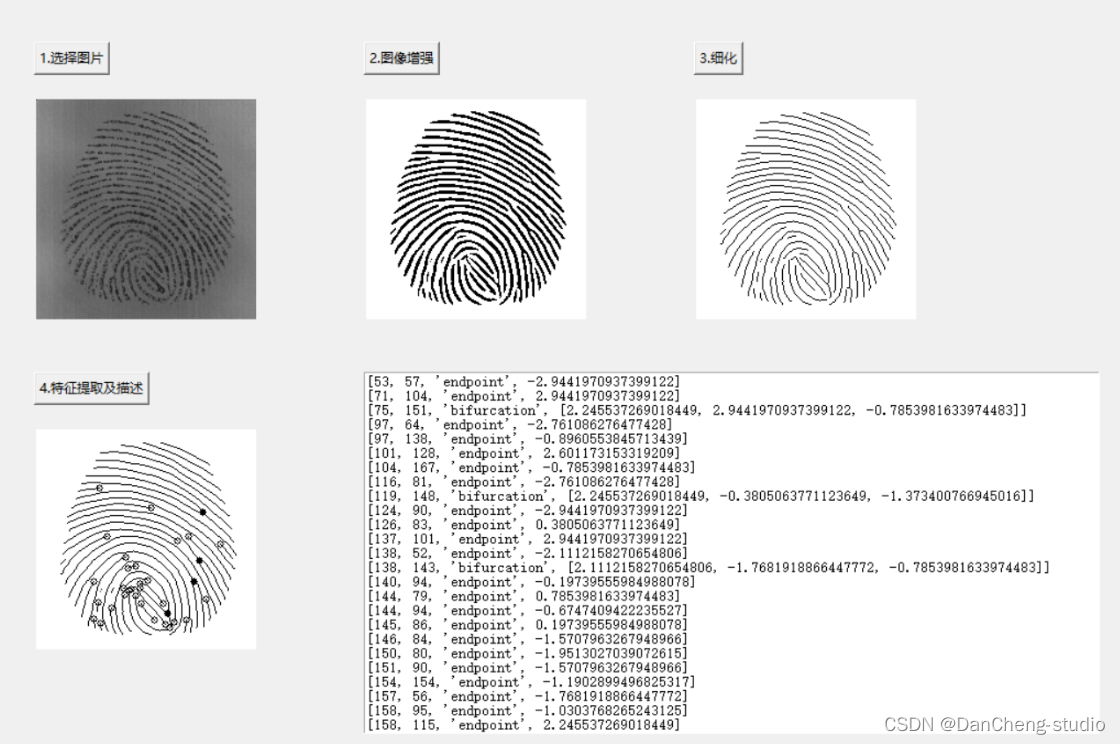
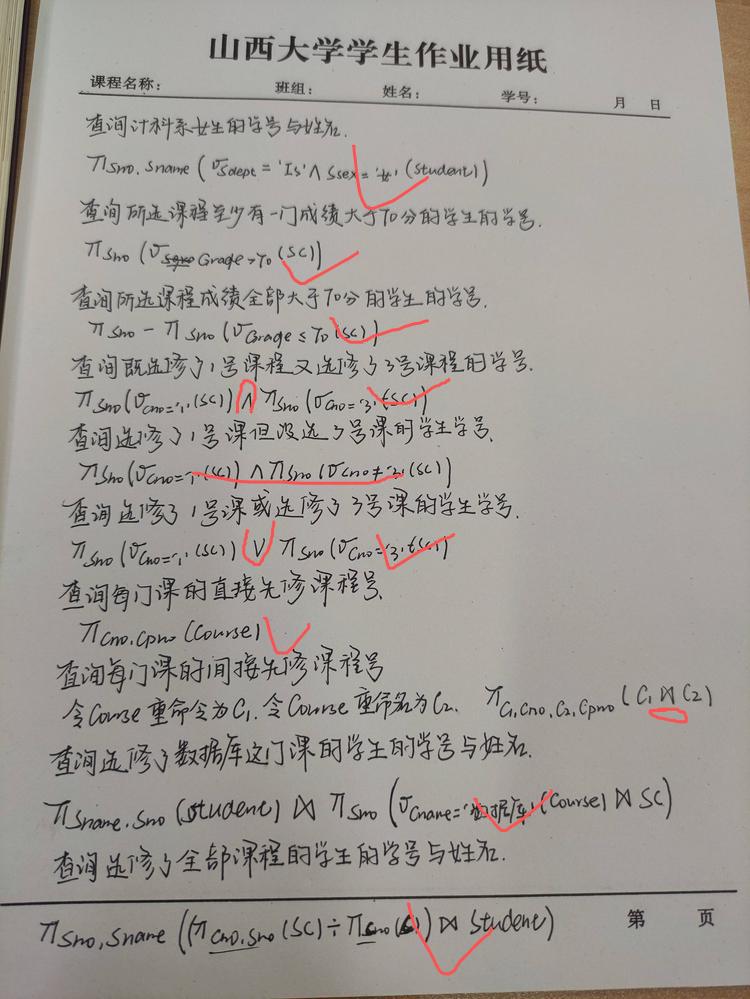
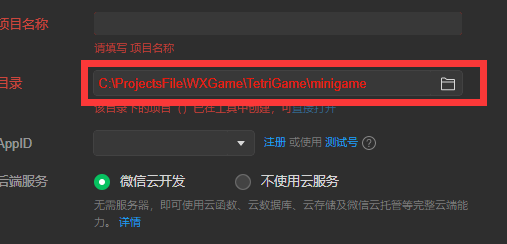


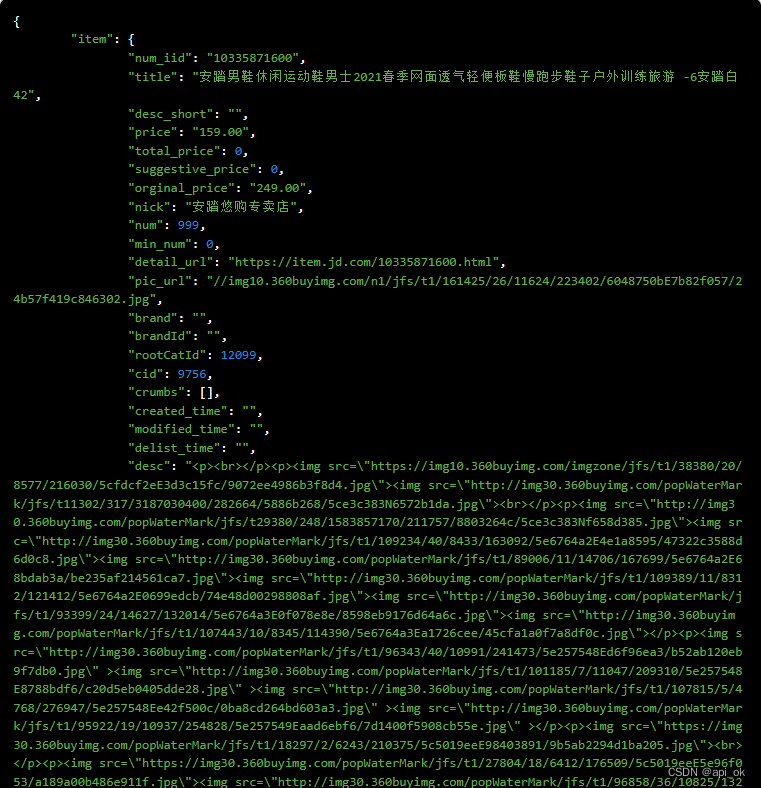

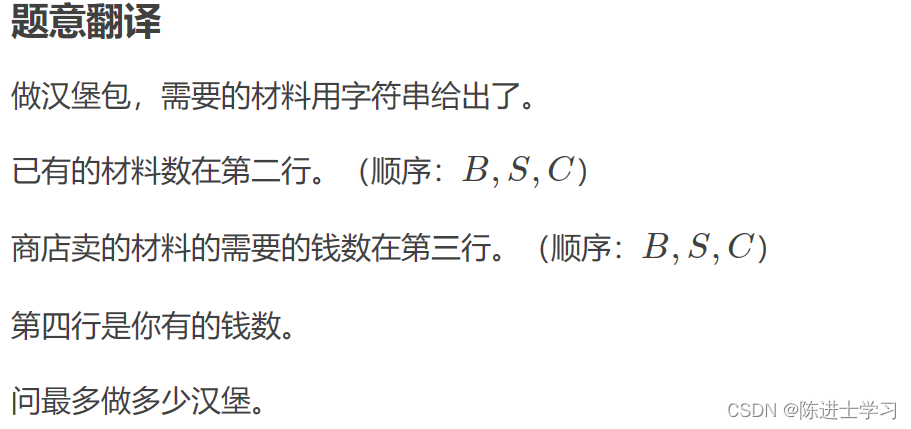







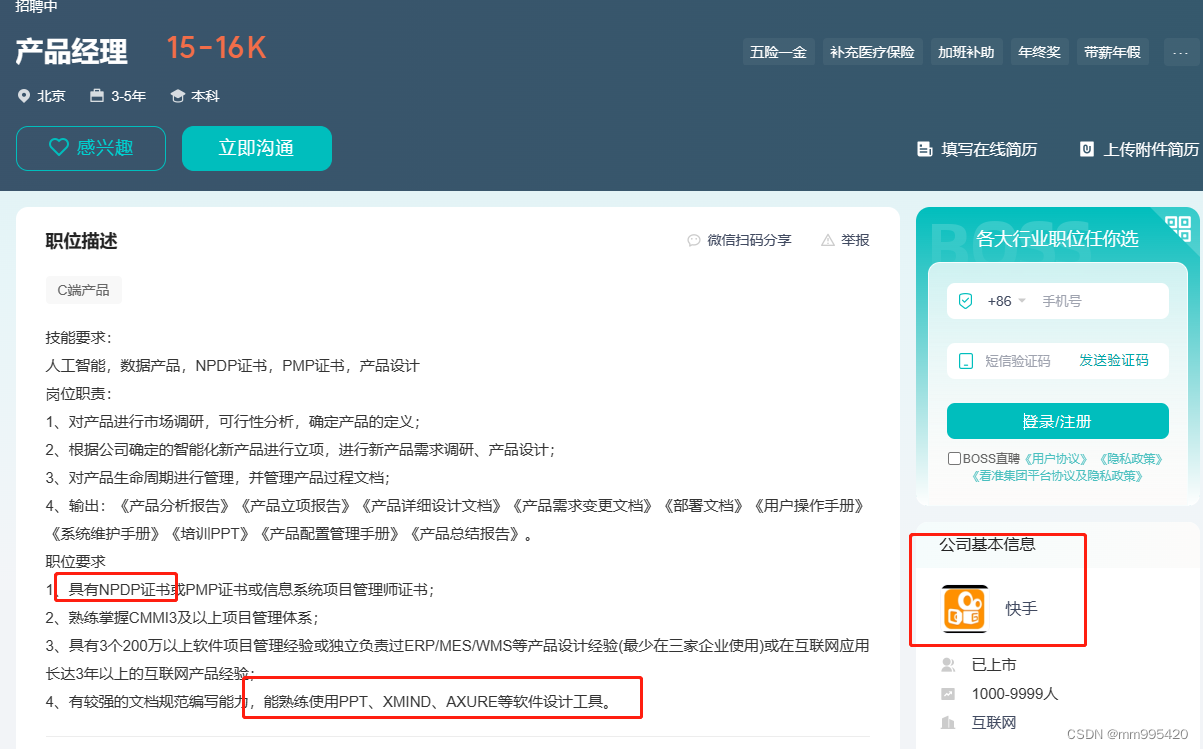

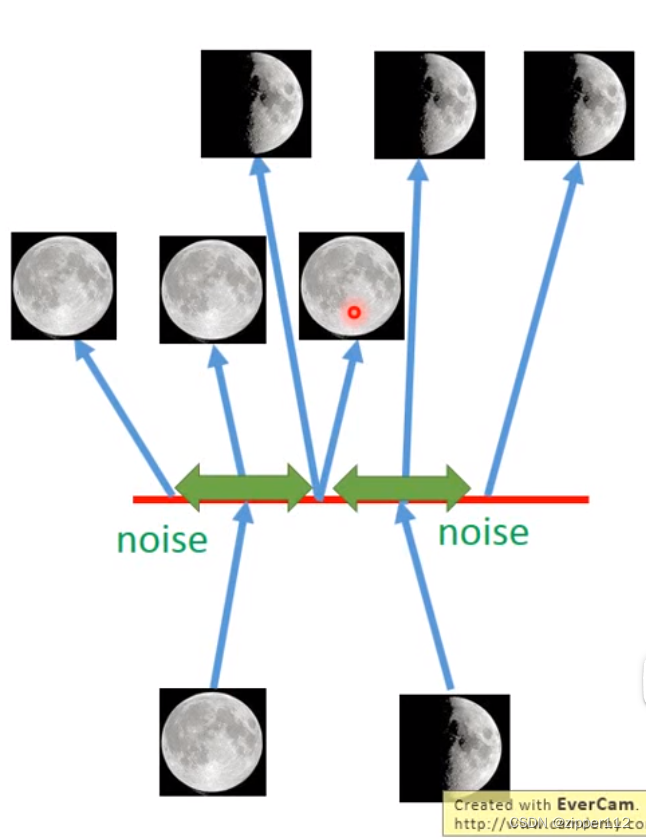
![博华网龙设备命令执行漏洞复现 [附POC]](https://img-blog.csdnimg.cn/69540ab6a8594d1b9506775af030d445.png)
